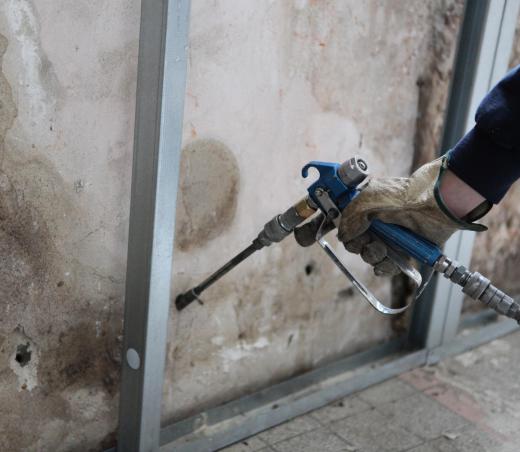What is Thermal Resistance?
Thermal resistance is a measure of a material's ability to resist heat transfer. The more a material is able to block heat transfer through its surface, the greater its thermal resistance. This concept is often applied to the building industry as a measure of insulation effectiveness and energy efficiency. As insulation is added to the building to improve efficiency levels, the thermal resistance of the structure increases.
Throughout most of the world, R-value is used to measure thermal conductivity and resistance. In the US, R-value is a measure of heat transfer in terms of degrees Fahrenheit and British Thermal Units (BTUs). Throughout the rest of the world, R-value is given using the International System of Units (SI units), and is measured in terms of BTUs and degrees Kelvin. The higher the R-value of a material, the better able it is to resist heat transfer. The lower the R-value, the easier it is for heat to pass through the material's surface.

Homeowners interested in improving their home's energy efficiency should look for materials with a high R-value to act as insulation. Insulation can be added to exterior walls, roofs, or foundations to help improve thermal resistance. While basic building materials like brick, concrete and drywall offer some resistance against heat transfer, they often have relatively low R-values compared to true insulating products. To determine the R-value of a wall or roof assembly, add the individual R-values for each component. For example, the R-value for a brick wall would be equal to the sum of the R-values of the brick, moisture barriers, and any interior drywall or insulating materials.
Fiberglass or wool blankets are among the most popular insulating products used to improve thermal resistance. These materials are affordable, easy to install, and readily available in most areas. They are also one of the poorest insulators, especially when compared to more effective products like spray foam or rigid foam boards. Some builders may also use loose-full cellulose or green products made from recycled denim or cotton to serve as building insulation.
The given R-value of a material indicates its ability to resist thermal transfer under perfect conditions. This means that the insulation must be installed and maintained properly, according to the manufacturer's recommendations. When insulation is compressed, it loses a great deal of its thermal resistance properties. Insulation may also fail when it is wet or moldy, or if insufficient amounts are used to fill a wall cavity.
AS FEATURED ON:
AS FEATURED ON:











Discussion Comments
@feruze: A vacuum is clearly very dense.
Can someone tell me the dimensional formula derivation of thermal resistance?
@ddljohn-- Density is the main factor here: the greater the density of the material, the greater the thermal resistance and thus insulation. If you are looking for building material that provides greater heat insulation, always go for the denser material.
In natural materials, like water and soil, thermal resistance calculations are affected by minerals (especially salt) and temperature in addition to density.
Why causes the differences in thermal resistivity in different materials? I mean what makes foam a better insulator than fiberglass?
Did you know that that thermal resistance is measured not only for building material but also for soil?
My brother is an electrical engineer, and when he's installing electrical and network systems underground he needs to know soil thermal resistivity since it can impact their performance. Crazy how one type of resistance can affect so many things, right?
Post your comments